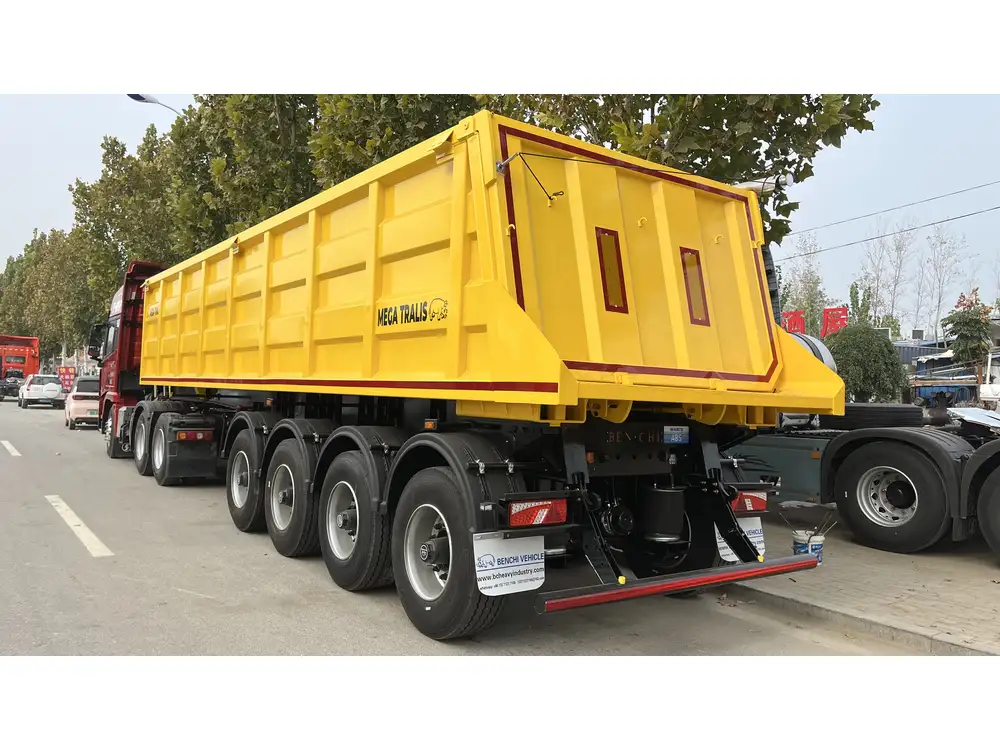In the ever-evolving world of logistics and transportation, the demand for semi-trailers has seen a remarkable upsurge. As businesses look to optimize their operations, understanding the costs associated with acquiring semi-trailers becomes pivotal. This intricate subject does not merely revolve around the base price of the trailers but includes a multitude of factors that can affect the overall expenditure.
Key Factors Influencing Trailer Costs
1. Type of Semi-Trailer
The category of semi-trailer remains one of the foremost determinants of cost. Different types serve various purposes and have distinctive price points. Here’s a breakdown:
| Type of Trailer | Approximate Cost Range |
|---|---|
| Flatbed Trailers | $15,000 – $30,000 |
| Refrigerated Trailers | $25,000 – $70,000 |
| Tank Trailers | $20,000 – $50,000 |
| Dry Van Trailers | $15,000 – $35,000 |
| Specialized Trailers | $30,000 – $100,000+ |
Initial Investment Versus Long-Term Costs
Acquiring a semi-trailer entails more than just an initial purchase price. Long-term maintenance, operational costs, and depreciation must be factored into the equation:
Maintenance Costs: Routine maintenance is crucial. Expect to spend annually about 15-20% of the trailer’s value on upkeep, including inspections, repairs, and replacements.
Operational Costs: Fuel efficiency and wear and tear on tires and brakes should be evaluated to ascertain overall operational costs. The type of load and journey duration also plays a role.
Depreciation: On average, semi-trailers lose about 10-15% of their value per year. Understanding depreciation aids in crafting a more accurate budget for your trailer investment.

Customization: Do You Need Extras?
Customization options abound in the semi-trailer market, ranging from additional safety features to technology integrations. Below are common enhancements and their potential costs:
| Customization Feature | Additional Estimated Cost |
|---|---|
| GPS Fleet Tracking | $500 – $2,000 |
| Anti-lock Braking System | $1,000 – $5,000 |
| Refrigeration Units | $10,000 – $25,000 |
| Custom Paint Jobs | $1,500 – $5,000 |
While customization can significantly enhance the functionality of a semi-trailer, careful consideration must be given to whether these features will provide a return on investment.
Quality and Brand Impact on Pricing
The brand of the semi-trailer significantly influences the cost, as established manufacturers often command a premium for their reputation, quality assurance, and post-purchase support. Here are some considerations:
- Reputation: Brands that are well-known in the industry offer reliability, though often at a higher price.
- Warranty and Support: Investing in a trailer that comes with an extensive warranty and robust customer support may save money in the long run due to lowered repair costs.
New vs. Used Semi-Trailers
Deciding between new and used semi-trailers can drastically affect your budget:
New Trailers: Generally more expensive but come with the latest technology and a full warranty. Price ranges between $15,000 to over $100,000 depending on features and type.
Used Trailers: Offer significant savings (often 20-50% less than new). However, they may require immediate repairs or lack certain modern features, which can diminish long-term cost-effectiveness. Detailed inspections are critical.

Financing Options Available
Utilizing financing options can mitigate the upfront costs of purchasing a semi-trailer:
Bank Loans: Traditional loans where interest rates fluctuate based on credit ratings – typically require a down payment.
Leasing: An attractive alternative, often leading to lower monthly payments without the long-term commitment. Many leases also cover maintenance.
Manufacturer Financing: Often available directly from manufacturers, this can provide competitive rates and packages tailored for new purchases.
Regional Variations in Pricing
Pricing can vary regionally, influenced by factors such as demand, supply chain logistics, and market competition. Areas with a higher density of logistics firms may offer more competitive pricing due to market saturation, while less populated regions might see elevated costs due to transport and availability challenges.
Analyzing the Total Cost of Ownership
When assessing the expense of a semi-trailer, it is indispensable to adopt a holistic view, considering all potential expenditures, including:
- Purchase Price
- Taxes and Fees
- Registration Costs
- Insurance
- Maintenance
- Fuel Consumption
Utilizing a Total Cost of Ownership (TCO) model can help businesses make informed decisions on trailer acquisition by comparing different models and their associated costs over time.

Understanding Insurance Requirements
Insurance is a fundamental component of operating semi-trailers, encompassing various coverage types that influence total costs:
| Type of Insurance | Estimated Annual Premium |
|---|---|
| Liability Insurance | $1,000 – $3,000 |
| Physical Damage Coverage | $1,500 – $4,000 |
| Cargo Insurance | $600 – $1,500 |
| Trailer Interchange Insurance | $300 – $800 |
Allied to the standard insurance coverage is the requirement of liability insurance mandated by law, which varies by state. It is crucial to consult with an experienced insurance agent familiar with the trucking industry to ascertain suitable coverage.
Future-Proofing Your Semi-Trailer Investment
Given the rapid evolution of the logistics sector, it is vital to consider future-proofing strategies.
Technological Upgrades: Opt for trailers equipped with or compatible with emerging technologies, such as electric systems, automated functions, and connectivity features.
Sustainability Considerations: The trend towards eco-friendly operations is forcing logistics companies to rethink their fleets. Investing in greener options may seem cost-prohibitive initially but can yield long-term savings and regulatory compliance benefits.
Conclusion: Making an Informed Decision
In contemplating the question, “How much do trailers cost?” it becomes abundantly clear that the answer is not black and white. The price of semi-trailers encapsulates a multitude of factors, from type and customization to financing and insurance.
Equipped with a thorough understanding of these various elements, potential buyers are better positioned to navigate this intricate landscape, making choices that enhance operational efficiency and profitability. As the logistics industry continues its upward trajectory, investing in the right semi-trailer today can pave the way for sustained success tomorrow.
For personalized guidance and support on finding the right trailer for your needs, don’t hesitate to reach out to our experts. We’re here to provide tailored solutions that align with your operational goals and budgetary considerations.



